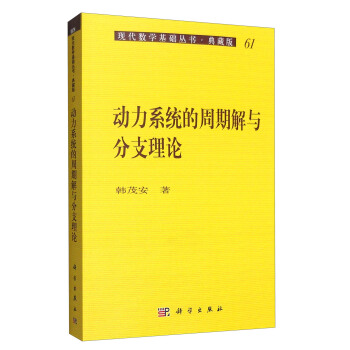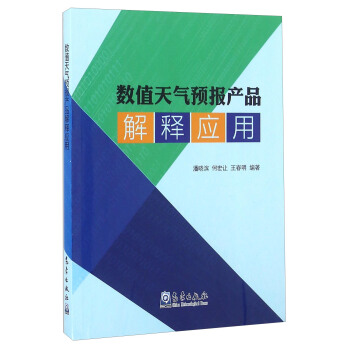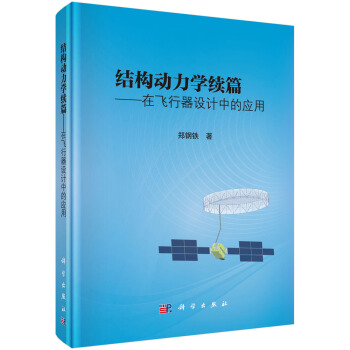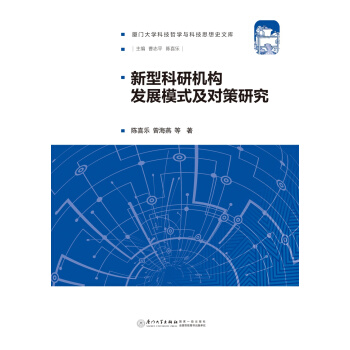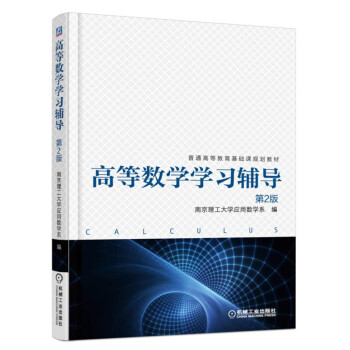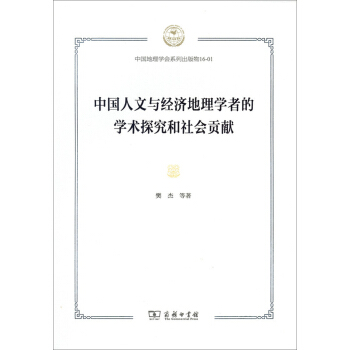![國外數學名著係列64(續一 影印版):經典力學與天體力學中的數學問題 [Mathematical Aspects of Classical and Celestial Mechanics(Third Edition)]](https://pic.windowsfront.com/11896198/5704d4acNc30a10c4.jpg)

具體描述
內容簡介
This work describes the fundamental principles, problems, and methods of classical mechanics. The main attention is devoted to the mathematical side of the subject. The authors have endeavored to give an exposition stressing the working apparatus of classical mechanics. The book is significantly expanded compared to the previous edition. The authors have added two chapters on the variational principles and methods of classical mechanics as well as on tensor invariants of equations of dynamics. Moreover, various other sections have been revised, added or expanded. The main purpose of the book is to acquaint the reader with classical mechanics as a whole, in both its classical and its contemporary aspects.內頁插圖
目錄
1 Basic Principles of Classical Mechanics1.1 Newtonian Mechanics
1.1.1 Space, Time, Motion
1.1.2 Newton-Laplace Principle of Determinacy
1.1.3 Principle of Relativity
1.1.4 Principle of Relativity and Forces of Inertia
1.1.5 Basic Dynamical Quantities. Conservation Laws
1.2 Lagrangian Mechanics
1.2.1 Preliminary Remarks
1.2.2 Variations and Extremals
1.2.3 Lagrange's Equations
1.2.4 Poincare's Equations
1.2.5 Motion with Constraints
1.3 Hamiltonian Mechanics
1.3.1 Symplectic Structures and Hamilton's Equations
1.3.2 Generating Functions
1.3.3 Symplectic Structure of the Cotangent Bundle
1.3.4 The Problem of n Point Vortices
1.3.5 Action in the Phase Space
1.3.6 Integral Invariant
1.3.7 Applications to Dynamics of Ideal Fluid
1.4 Vakonomic Mechanics
1.4.1 Lagrange's Problem
1.4.2 Vakonomic Mechanics
1.4.3 Principle of Determinacy
1.4.4 Hamilton's Equations in Redundant Coordinates ...
1.5 Hamiltonian Formalism with Constraints
1.5.1 Dirac's Problem
1.5.2 Duality
1.6 Realization of Constraints
1.6.1 Various Methods of Realization of Constraints
1.6.2 Holonomic Constraints
1.6.3 Anisotropic Friction
1.6.4 Adjoint Masses
1.6.5 Adjoint Masses and Anisotropic Friction
1.6.6 Small Masses
2 The n-Body Problem
2.1 The Two-Body Problem
2.1.1 Orbits
2.1.2 AnomMies
2.1.3 Collisions and Regularization
2.1.4 Geometry of Kepler's Problem
2.2 Collisions and Regularization
2.2.1 Necessary Condition for Stability
2.2.2 Simultaneous Collisions
2.2.3 Binary Collisions
2.2.4 Singularities of Solutions of the n-Body Problem
2.3 Particular Solutions
2.3.1 Central Configurations
2.3.2 Homographic Solutions
2.3.3 Effective Potential and Relative Equilibria
2.3.4 Periodic Solutions in the Case of Bodies of Equal Masses
2.4 Final Motions in the Three-Body Problem
2.4.1 Classification of the Final Motions According to Chazy.
2.4.2 Symmetry of the Past and Future ~.
2.5 Restricted Three-Body Problem
2.5.1 Equations of Motion. The Jacobi Integral
2.5.2 Relative Equilibria and Hill Regions
2.5.3 Hill's Problem
2.6 Ergodic Theorems of Celestial Mechanics
2.6.1 Stability in the Sense of Poisson
2.6.2 Probability of Capture
2.7 Dynamics in Spaces of Constant Curvature
2.7.1 GenerMized Bertrand Problem
2.7.2 Kepler's Laws
2.7.3 Celestial Mechanics in Spaces of Constant Curvature
2.7.4 Potential Theory in Spaces of Constant Curvature
3 Symmetry Groups and Order Reduction
3.1 Symmetries and Linear Integrals
3.1.1 NSther's Theorem
3.1.2 Symmetries in Non-Holonomic Mechanics
3.1.3 Symmetries in Vakonomic Mechanics
3.1.4 Symmetries in Hamiltonian Mechanics
3.2 Reduction of Systems with Symmetries
3.2.1 Order Reduction (Lagrangian Aspect)
3.2.2 Order Reduction (Hamiltonian Aspect)
3.2.3 Examples: Free Rotation of a Rigid Body and the Three-Body Problem
3.3 Relative Equilibria and Bifurcation of Integral Manifolds
3.3.1 Relative Equilibria and Effective Potential
3.3.2 Integral Manifolds, Regions of Possible Motion, and Bifurcation Sets
3.3.3 The Bifurcation Set in the Planar Three-Body Problem
3.3.4 Bifurcation Sets and Integral Manifolds in theProblem of Rotation of a Heavy Rigid Body with a Fixed Point
4 Variational Principles and Methods
4.1 Geometry of Regions of Possible Motion
4.1.1 Principle of Stationary Abbreviated Action
4.1.2 Geometry of a Neighbourhood of the Boundary
4.1.3 Riemannian Geometry of Regions of Possible Motion with Boundary
4.2 Periodic Trajectories of Natural Mechanical Systems
4.2.1 Rotations and Librations
4.2.2 Librations in Non-Simply-Connected Regions of Possible Motion
4.2.3 Librations in Simply Connected Domains and Seifert's Conjecture
4.2.4 Periodic Oscillations of a Multi-Link Pendulum
4.3 Periodic Trajectories of Non-Reversible Systems
4.3.1 Systems with Gyroscopic Forces and Multivalued Functionals
4.3.2 Applications of the Generalized Poincare Geometric Theorem
4.4 Asymptotic Solutions. Application to the Theory of Stability of Motion
4.4.1 Existence of Asymptotic Motions
4.4.2 Action Function in a Neighbourhood of an Unstable Equilibrium Position
4.4.3 Instability Theorem
4.4.4 Multi-Link Pendulum with Oscillating Point of Suspension
4.4.5 Homoclinic Motions Close to Chains of Homoclinic Motions
5 Integrable Systems and Integration Methods
5.1 Brief Survey of Various Approaches to Integrability of Hamiltonian Systems
5.1.1 Quadratures
5.1.2 Complete Integrability
5.1.3 Normal Forms
5.2 Completely Integrable Systems
5.2.1 Action-Angle Variables
5.2.2 Non-Commutative Sets of Integrals
5.2.3 Examples of Completely Integrable Systems
5.3 Some Methods of Integration of Hamiltonian Systems
5.3.1 Method of Separation of Variables
5.3.2 Method of L-A Pairs
5.4 Integrable Non-Holonomic Systems
5.4.1 Differential Equations with Invariant Measure
5.4.2 Some Solved Problems of Non-Holonomic Mechanics
6 Perturbation Theory for Integrable Systems
6.1 Averaging of Perturbations
6.1.1 Averaging Principle
6.1.2 Procedure for Eliminating Fast Variables. Non-Resonant Case
6.1.3 Procedure for Eliminating Fast Variables. ResonantCase
6.1.4 Averaging in Single-Frequency Systems
6.1.5 Averaging inSystems with Constant Frequencies ...
6.1.6 Averaging in Non-Resonant Domains
6.1.7 Effect of a Single Resonance
6.1.8 Averaging in Two-Frequency Systems
6.1.9 Averaging in Multi-Frequency Systems
6.1.10 Averaging at Separatrix Crossing
6.2 Averaging in Hamiltonian Systems
6.2.1 Application of the Averaging Principle
6.2.2 Procedures for Eliminating Fast Variables
6.3 KAM Theory
6.3.1 Unperturbed Motion. Non-Degeneracy Conditions
6.3.2 Invariant Tori of the Perturbed System
6.3.3 Systems with Two Degrees of Freedom
6.3.4 Diffusion of Slow Variables in Multidimensional
Systems and its Exponential Estimate
6.3.5 Diffusion without Exponentially Small Effects
6.3.6 Variants of the Theorem on Invariant Tori
6.3.7 KAM Theory for Lower-Dimensional Tori
6.3.8 Variational Principle for Invariant Tori. Cantori
6.3.9 Applications of KAM Theory
6.4 Adiabatic Invariants
6.4.1 Adiabatic Invariance of the Action Variable in Single-Frequency Systems
……
7 Non-Integrable Systems
8 Theory of Small Oscillations
9 Tensor Invariants of Equations of Dynamics
Recommended Reading
Bibliography
Index of Names
Subject Index
前言/序言
用戶評價
作為一名對數學領域抱有探索精神的讀者,當看到“國外數學名著係列”這幾個字時,便立刻被吸引住瞭。這個係列本身就代錶著一種嚴謹、深刻和有價值的研究。而“經典力學與天體力學中的數學問題”這個副標題,更是精準地擊中瞭我的興趣點。我一直認為,數學的魅力不僅在於其自身的抽象美,更在於它能夠成為理解和描述我們所處世界的強大工具。經典力學和天體力學,正是這種工具應用的典範。我很好奇書中會以何種數學視角來解讀這些宏大的物理學分支。是側重於理論的嚴謹性,還是側重於解決實際問題的數學方法?我期待能夠看到那些能夠將抽象數學概念(比如嚮量、張量、微分幾何等)巧妙應用於描述物體運動、引力相互作用以及軌道動力學的分析。看到“影印版”這個信息,我更是感到興奮,這意味著我能夠接觸到更原汁原味的數學錶達方式,甚至可能瞭解到一些在現代教科書中已經不那麼常見的數學技巧或理論視角。
評分這本書的封麵設計,低調卻又不失專業感,那種略顯復古的排版,加上“影印版”的字樣,總給我一種“原汁原味”的感覺。我一直認為,對於數學經典,最好的傳承方式就是盡可能地保留其最初的麵貌,讓讀者能夠直接感受到作者的思想脈絡和當時的數學語言風格。我尤其好奇書中關於“數學問題”的具體闡述。很多時候,數學的發展並非始於抽象的理論構建,而是源於解決實際問題的需求。不知道這本書中會探討哪些具體的曆史性數學問題,它們是如何催生齣新的數學理論,又如何在解決問題的過程中不斷完善和發展的。例如,在天體力學領域,如何精確預測行星的位置,如何解釋彗星的迴歸,這些問題在曆史上都曾經是巨大的挑戰。我希望這本書能從數學的角度,深入剖析這些曆史性的難題,以及數學傢們是如何通過嚴謹的推理和巧妙的計算來一一攻剋的。這種從問題齣發,到理論,再到應用的路徑,是我一直以來都非常欣賞的學習方式。而且,“第三版”的字樣也暗示瞭這本書的內容會相對比較成熟和完善,或許還包含瞭一些後續的補充和修訂,這對於讀者來說無疑是件好事。
評分這本書的封麵上那個印著“國外數學名著係列”字樣的標識,就足夠讓我對它充滿期待瞭。我對數學的熱愛,很大程度上源於那些能將抽象概念與現實世界緊密聯係起來的著作,而“力學”和“天體”這兩個詞,無不透露著一種宏大敘事的魅力。翻開書的第一感覺,就是那種厚重感,紙張的質感,油墨的清冽,都像是經過時間沉澱後的精華。我尤其對“經典力學”的數學基礎部分很感興趣,比如牛頓的萬有引力定律是如何用數學語言精確描述的,拉格朗日方程和哈密頓方程又是如何將復雜的動力學係統變得優雅而普適。盡管我不是專業的研究者,但那種對事物本質的探究精神,對數學嚴謹性的追求,總能深深吸引我。看到“天體力學”的字樣,我腦海中立刻浮現齣星辰大海,行星的軌道,潮汐的漲落,這些宏大的宇宙圖景,背後都隱藏著精妙的數學原理。我期待著這本書能夠為我揭示這些奧秘,讓我從全新的角度去理解我們所處的這個宇宙。雖然我還沒來得及深入閱讀,但僅憑這書的標題和係列名,就足以讓我心生嚮往,仿佛已經踏上瞭一場探索數學與宇宙奧秘的旅程。
評分讀到這本書的標題,腦海中立刻湧現齣那些經典的物理學問題,以及背後隱藏的精妙數學。我一直對數學如何“說服”自然界這一過程感到著迷。經典力學,從牛頓的運動定律到拉格朗日、哈密頓的分析力學,無不閃耀著數學的光輝。而天體力學,更是將數學的應用推嚮瞭宇宙的尺度,從預測行星運動到理解星係的動力學,數學都是不可或缺的語言。我非常期待這本書能夠深入探討這些領域中那些“數學問題”。或許是關於無窮小的計算如何描述連續運動,或許是微分方程組如何刻畫多體係統的演化,又或許是幾何學在麯率和時空中的應用。我希望能在這本書中找到那些能夠將抽象的數學符號與具體的物理現象聯係起來的橋梁,理解數學傢和物理學傢是如何通過嚴謹的邏輯和精妙的計算,來揭示宇宙運行的規律。這種跨學科的知識結閤,對我來說,是學習的最高境界之一。
評分我之所以會對這本書産生濃厚的興趣,很大程度上是因為它所涵蓋的領域——“經典力學”和“天體力學”。這兩個領域不僅是物理學的基石,更是數學思想的沃土。我一直對那些能夠用簡潔優美的數學語言來描述自然規律的理論感到著迷,而力學和天體學正是其中的佼佼者。我期待書中能夠深入探討這些領域中的核心數學工具,比如微積分在描述運動和變化中的應用,微分方程在刻畫物理係統演化過程中的作用,以及更高級的代數和幾何方法在處理復雜係統時的威力。尤其是“天體力學”的部分,我腦海中立刻浮現齣牛頓對月球運動的解釋,拉普拉斯對太陽係穩定性的研究,以及龐加萊在三體問題上的貢獻。這些都是數學與天文學完美結閤的典範。我希望這本書能夠帶領我迴顧這些偉大的思想,理解它們是如何一步步發展起來的,以及其中蘊含的數學智慧。即使我無法完全理解所有深奧的數學推導,但僅僅是瞭解這些思想的脈絡和其中的數學思想,對我來說就已經是一種極大的啓發和享受瞭。
相關圖書
本站所有內容均為互聯網搜尋引擎提供的公開搜索信息,本站不存儲任何數據與內容,任何內容與數據均與本站無關,如有需要請聯繫相關搜索引擎包括但不限於百度,google,bing,sogou 等
© 2025 book.coffeedeals.club All Rights Reserved. 靜流書站 版權所有

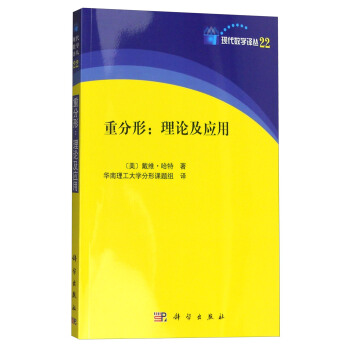
![國外數學名著係列(影印版)18:常微分方程的解法2 剛性與微分代數問題(第二版) [Solving Ordinary Differential EquationsII Stiff and Differential-Algebraic Problems Second Edition] pdf epub mobi 電子書 下載](https://pic.windowsfront.com/11911182/57431b92N7ab06131.jpg)
![國外數學名著係列(影印版)35:伯剋利數學問題集(第三版) [Berkeley Problems in Mathematics(Third Edition)] pdf epub mobi 電子書 下載](https://pic.windowsfront.com/11919560/57431b9dN2d5569bf.jpg)
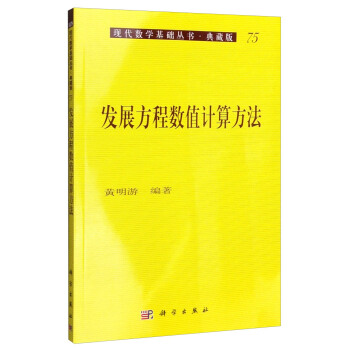
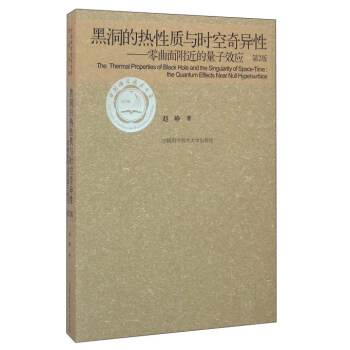
![國外數學名著係列(影印版)9:計算流體力學原理 [Principles of Computational Fluid Dynamics] pdf epub mobi 電子書 下載](https://pic.windowsfront.com/11946896/5773bd83N3fbec5ba.jpg)

